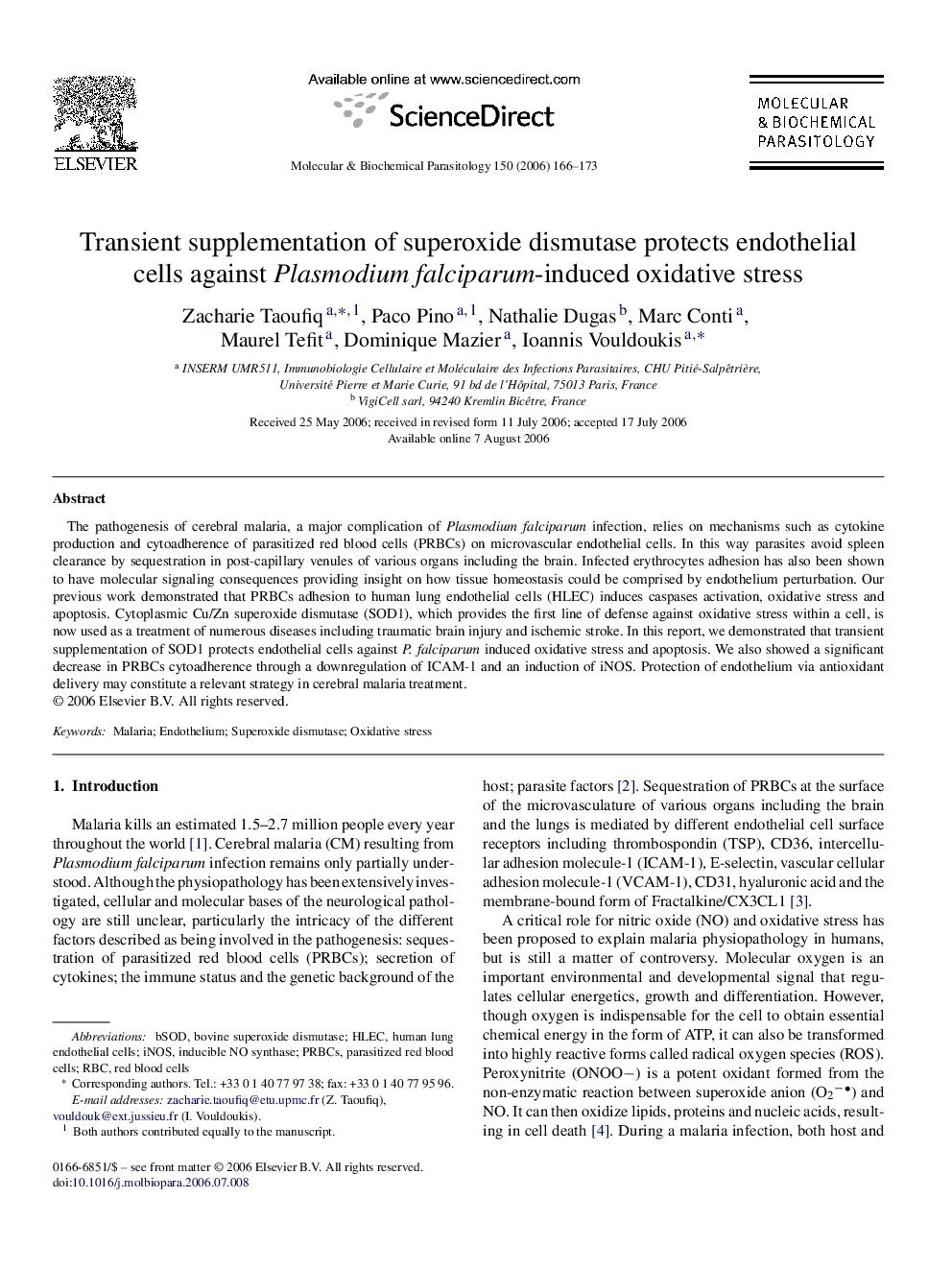| Article ID | Journal | Published Year | Pages | File Type |
|---|---|---|---|---|
| 5916137 | Molecular and Biochemical Parasitology | 2006 | 8 Pages |
Abstract
The pathogenesis of cerebral malaria, a major complication of Plasmodium falciparum infection, relies on mechanisms such as cytokine production and cytoadherence of parasitized red blood cells (PRBCs) on microvascular endothelial cells. In this way parasites avoid spleen clearance by sequestration in post-capillary venules of various organs including the brain. Infected erythrocytes adhesion has also been shown to have molecular signaling consequences providing insight on how tissue homeostasis could be comprised by endothelium perturbation. Our previous work demonstrated that PRBCs adhesion to human lung endothelial cells (HLEC) induces caspases activation, oxidative stress and apoptosis. Cytoplasmic Cu/Zn superoxide dismutase (SOD1), which provides the first line of defense against oxidative stress within a cell, is now used as a treatment of numerous diseases including traumatic brain injury and ischemic stroke. In this report, we demonstrated that transient supplementation of SOD1 protects endothelial cells against P. falciparum induced oxidative stress and apoptosis. We also showed a significant decrease in PRBCs cytoadherence through a downregulation of ICAM-1 and an induction of iNOS. Protection of endothelium via antioxidant delivery may constitute a relevant strategy in cerebral malaria treatment.
Keywords
Related Topics
Life Sciences
Biochemistry, Genetics and Molecular Biology
Molecular Biology
Authors
Zacharie Taoufiq, Paco Pino, Nathalie Dugas, Marc Conti, Maurel Tefit, Dominique Mazier, Ioannis Vouldoukis,
